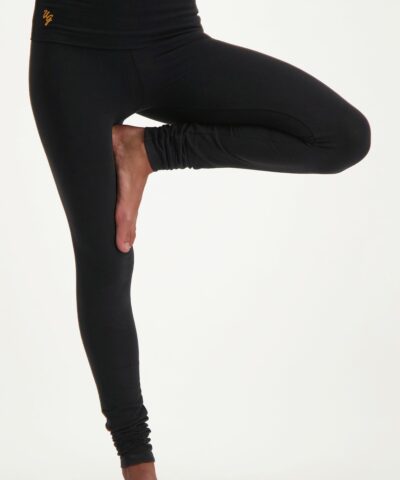How yogatherapy can give the control over your body back
The treatment of trauma with yogatherapy
Not everyone knows it, but yoga also has a therapeutic purpose. Yogatherapy can be used to treat mental complaints and traumas. Yoga therapist Anneke Sips told us more about the power and importance of yoga in trauma treatment. “Yogatherapy is about taking back control over your own body and life.”
Personalized sessions
“I use trauma-informed yoga sessions. These sessions are specifically adapted to the client”, Anneke explains. This mainly involves being careful with the use of language. Language and voice are powerful tools to put trauma victims at ease. On the other hand, there is a chance that trauma can be made worse by the misuse of language.
“One of the main feelings that comes with trauma is the feeling of being trapped. At the time of the incident, the victim had no choice to experience something else. Otherwise, they would have. As a result, victims often forget that they are allowed to make choices in life.” Yogatherapy can be used to break through this mindset. By repeatedly mentioning that the client has a choice and is allowed to make it, you create a safe space. “For example, I invite my clients to lift their leg, and they get to choose which one. That works a lot better than giving directive instructions that are used in normal yoga classes. Telling them what to do and what not to do only intensifies the trauma”, Anneke says.
Different person, different treatment
The duration of the yogatherapy treatment is not certain. Anneke mainly looks at the help the clients desire and what they want to work on. “There are people who come a few times to get rid of exam stress. That usually passes quickly. On the other hand, I have clients with addictions, relationship problems or abuse histories. These kinds of problems need a lot of time and attention to wear off.”
Whether yoga should be used as a supplement to regular therapy or on its own also varies, according to Anneke. “Yogatherapy can definitely be used as a supplement. It has no side effects, which is a big advantage. Recently, more research on yoga as a stand-alone therapy is being conducted. From my experience, it is definitely possible as long as the client is completely open to the practice of yoga.”
Yoga Tools
“The Internet tells you that an Uttanasana (forward bend) can cure depression, but it doesn’t work that easily with everyone.” According to Anneke, it is better to look at what fits the person rather than the diagnosis. Everyone has different symptoms and no one is the same. An Uttanasana could also feel unsafe for someone. “I look at each person individually to see what works and what doesn’t.”
Anneke uses a holistic approach to her yogatherapy treatment. She looks at her client as a whole and looks for a treatment for body, breath and mind. Within this powerful trio, the trauma victim is given the space to make their own choices. “I am the one who tries to pull the victim out of a dark time, but I am not the one making choices. I walk around it and list the tools we could use. They get to choose how they handle it.”
For example, to learn how to control the mind, attention training and meditations are used. The client may focus their attention on something of their choice, such as their breath, a statue or the ground. This can help quiet the mind and creates awareness about having different options. “Having a choice works very empowering. They are responsible for their process of yogatherapy and the outcome. I just provide the tools, so they can move forward on their own.”
The power within
Yogatherapy allows trauma victims to feel at home in their own bodies again. Most victims have issues like regular re-experiences, sensitivity to triggers, and walking around with the story behind their trauma. The body and the trauma have become one.
They learn to reconnect with themselves without bringing up the trauma. “It’s about learning to feel and interact with your body, breath and mind. Learning that feelings don’t have to be hidden away, and learning that you are the boss, the one who can make choices.” By doing so, they develop the power to control their thoughts and emotions.
Anneke hopes that with yogatherapy, clients can regain control over their bodies and lives and learn to love themselves again. “I see the purpose of yogatherapy as the Sanskrit word: Svasta. This means to be, or in this case become, like yourself. It’s a beautiful process to see someone learn who they are. They are not just victims, so I am there to help them search for their true nature together. In the hope that they can love it again.”
Besides being a yoga therapist, Anneke specializes in training yoga teachers. According to her, it is a good idea for every yoga teacher to have basic knowledge about trauma. This can be done by following the modules Anneke offers. Want to know more?









